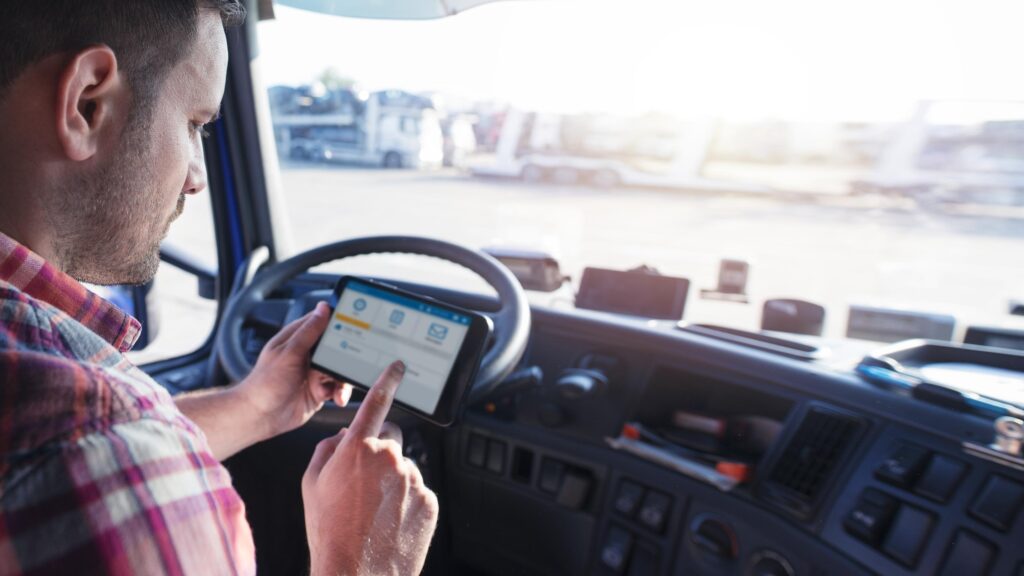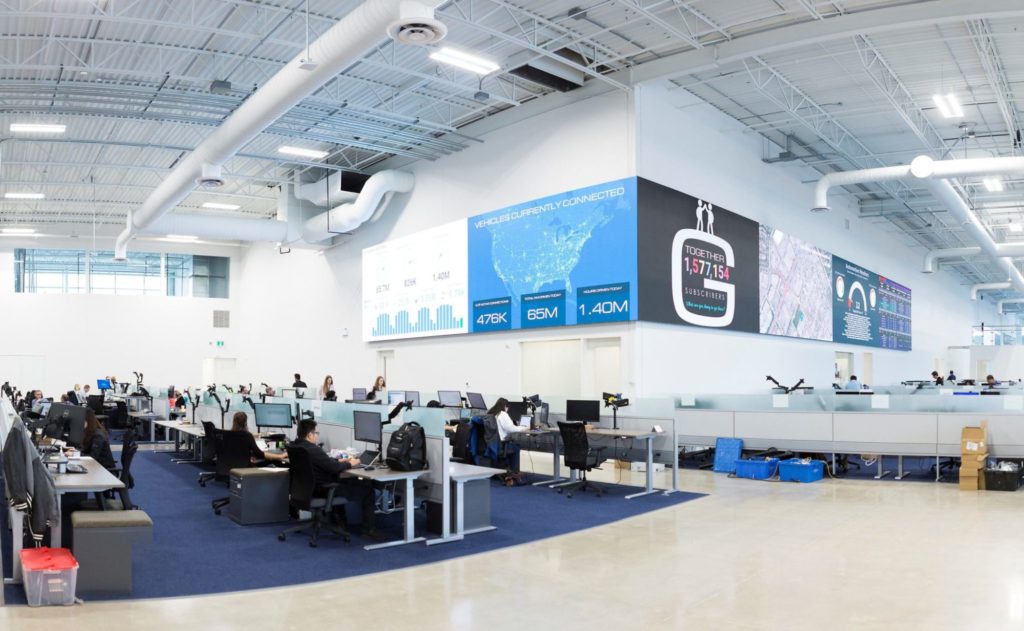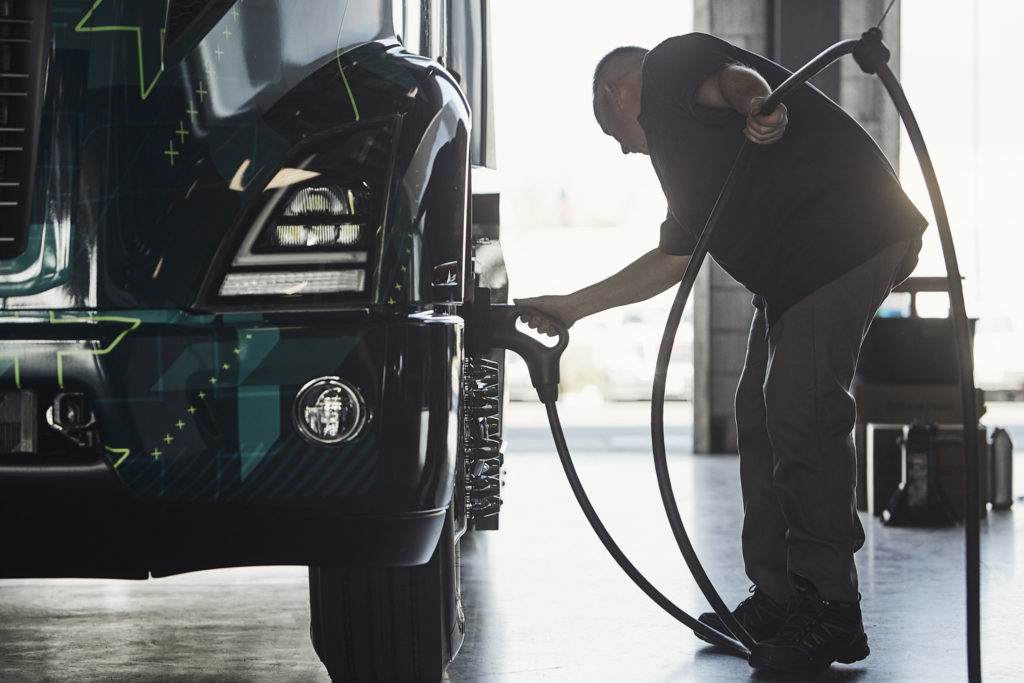8 quick telematics takeaways from Geotab executives
If you want to manage it, you have to measure it, and advances in vehicle telematics are giving fleets an opportunity to manage more processes than ever before.
Geotab executives sat down with Today’s Trucking to discuss several related trends as they prepared for the online Geotab Extend event, running this week. Here are eight quick takeaways that emerged:

Geotab will certify all its ELDs
As Canada’s federally regulated carriers approach a mandate for electronic logging devices (ELDs), Geotab confirms that it will certify all its equipment, including white-label systems it produces for suppliers like Mack and Volvo.
“All that work is close to being underway or underway,” says Geotab CEO Neil Cawse, noting that the Canadian third-party-certification process is superior to the self-certification required by U.S. regulators.
He also expects the process will block many existing suppliers from the Canadian market altogether.
“We love innovation, and we want to support innovation,” Cawse stresses. But some “fringe players” who balk at the cost of certifying the equipment likely will not have a long-term role in the industry, he adds.
The third-party certification process is designed to ensure ELDs meet technical standards, helping to block equipment that can be easily manipulated.

Truck telematics could help steer post-pandemic stimulus
Telematics data told the story of economic shutdowns associated with Covid-19. Average speeds increased when highways were devoid of car traffic. Construction activity was among the first sectors to re-start.
“Freight has been pretty consistent the whole way through – if not increasing. It’s been pretty insane,” says Mike Branch, Geotab’s vice-president – data and analytics. “In many sectors we’re back to where we were before.”
But some provincial and state governments are now looking at the data to see where economic stimulus packages might need to focus.
“They’re looking at alternative sources of data to understand the impacts of funding,” Branch explains, noting that the truck traffic can shift before other economic indicators identify a problem.
It could help to answer a question during the post-pandemic recovery: “How can we better use our taxpayers’ money, and where is stimulus needed?”

Data will play a key role in electric vehicle charging strategies
Discussions about battery-electric trucks tend to focus on battery weight and range, but telematics systems will also play a key role in managing charging procedures.
The monitoring systems will play a role in managing operating costs, says Charlotte Argue, Geotab’s senior manager – fleet electrification.
For trucks that return to a home base every night, that might mean deciding which trucks need recharging right away, and which can be charged during off-peak hours when electricity is cheaper. The data could also be used to reimburse other businesses when on-demand charging is required in the midst of a trip.
From a telematics perspective, this means monitoring factors like a truck’s location, routes, state of charge, and the kilowatt-hours of energy consumed during charging itself.
But the data will also play a role in managing mixed diesel and electric fleets, Argue says. Details about today’s dwell times can determine where fast chargers might best be located for future electric assets.
In the meantime, telematics suppliers are looking to solve the challenges that come with a lack of data standards associated with electric vehicles.
“What do we mean by ‘battery capacity’? What do we mean by ‘state of charge?’” Argue offers as an example.
And fleets will need to be able to monitor such data for their entire operation, even if that involves a mixture of nameplates.
Open platforms will open the door to predictive maintenance
Scott Sutarik has spent years promoting the value of open platforms over proprietary telematics systems that are limited to individual manufacturers. Before coming to Geotab he worked on Navistar’s OnCommand system to support that very thing.
“At the end of the day, open architecture allows fleets to get the absolute most out of their solution,” says Geotab’s vice-president, commercial vehicle solutions. “What we have today is great for today, but we don’t know what that fleet’s going to need in six months.
“Open architecture system allows fleets the flexibility to solve issues that maybe we didn’t think of right away.”
The sharing of related data behind the scenes – and tapping into the all-important “big data” — will also offer better insights into the way components are performing, clearing the way for truly predictive maintenance activities, he says.
Picture health checks for electrical systems that determine when preventive maintenance is required, rather than basing the work on timelines, or sensors that monitor oil condition rather than requiring an in-lab analysis.
“That’s really the next step,” he says.
Discussions continue around security and consent
While plenty of insights can be gleaned by comparing data from different sources, the process can raise questions about privacy. Exactly what data should be shared, and with whom?
An increasing number of manufacturers are making gains with the firewalls to support bi-directional data, says Sherry Calkins, vice-president – strategic partners. Picture systems that can “listen” to shared data, but not trigger actions like over-the-air updates.
In the meantime, conversations continue around “security and consent”, to ensure personal identifiable information is protected, and what happens to data when it’s retrieved.
Telematics data needs to increase to maximize machine learning
While the flow of telematics-related data might appear to be coming through a fire hose, it may be a mere trickle of what fleets will require to support decisions generated through machine learning or artificial intelligence.
“The next hurdle to overcome is the granularity of the data,” says Geotab’s Calkins.
“If it’s not that second-by-second data, it’s really hard to get into that machine learning.”
Smart trucks monitor surrounding vehicles. Smarter systems will involve looking beyond that.
Trucks are undeniably becoming smarter, with advances in autonomous systems like autonomous emergency braking or adaptive cruise control.
But this merely scratches the surface of what telematics could achieve if systems could tap into vehicle-to-infrastructure (V2I) and vehicle-to-everything (V2X) networks, says Jean Pilon-Bignell, Geotab’s vice-president of business development, government and smart city.
“The most critical element is understanding where these vehicles are coming from,” he says, referring to the way some added context could address traffic bottlenecks.
As an example, Geotab explored some traffic backups that occurred every Wednesday at a Canada-U.S. border crossing.
“No one could figure out what that bottleneck was,” he says. But the data told the story – much of it was associated with shipments that originated in Mexico. The trucks took 2-1/2 days to reach that point on the map.
Such insights are not possible with vehicle-to-vehicle systems alone.
“You can’t track a vehicle intersection to intersection,” he says of today’s systems.
“People need to start understanding there is a benefit to allowing the processing of identifiable data.”
True video value to come with machine learning
Video can be a valuable addition to available telematics data.
In the U.K., forward-facing dashcams are even needed to secure insurance, says Colin Sutherland, Geotab’s executive vice-president – sales and marketing. Much of that was driven by a surge in wrongful accident claims.
But here in North America, fleets seem more interested in using video as a driver coaching tool.
The challenge, though, involves monitoring the flood of information that’s available.
“They’re saying, ‘I don’t want to look at video all day long,’” Sutherland says, referring for needs for systems that also combine artificial intelligence when deciding when to alert a driver or a manager.
“The goal we’re trying to achieve here is zero accidents, zero fatalities.”
As far as telematics data has come, however, Geotab’s CEO believes it still has far to go.
“The technology is not perfect yet – even the machine-learning side,” says Cawse. “Don’t believe all the rhetoric yet … There’s many distracted events that aren’t picked up yet.”
Have your say
This is a moderated forum. Comments will no longer be published unless they are accompanied by a first and last name and a verifiable email address. (Today's Trucking will not publish or share the email address.) Profane language and content deemed to be libelous, racist, or threatening in nature will not be published under any circumstances.